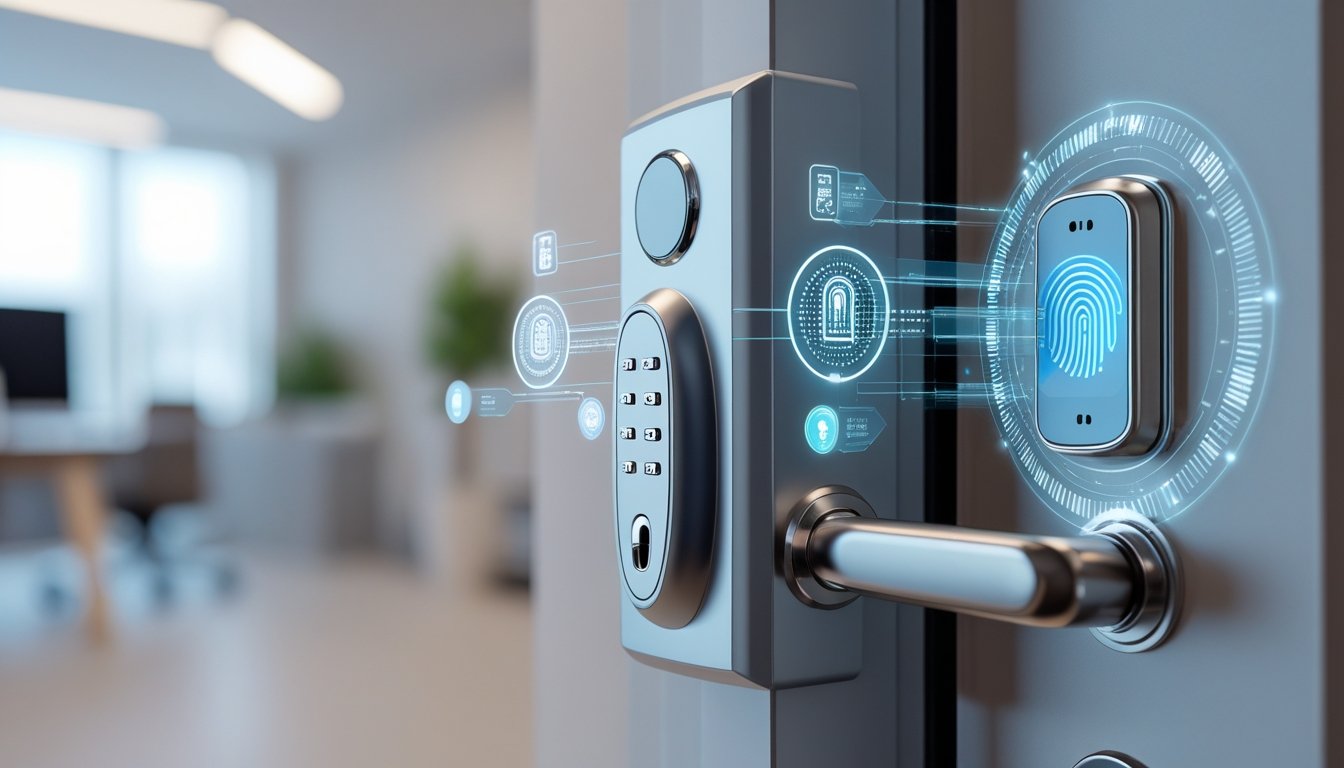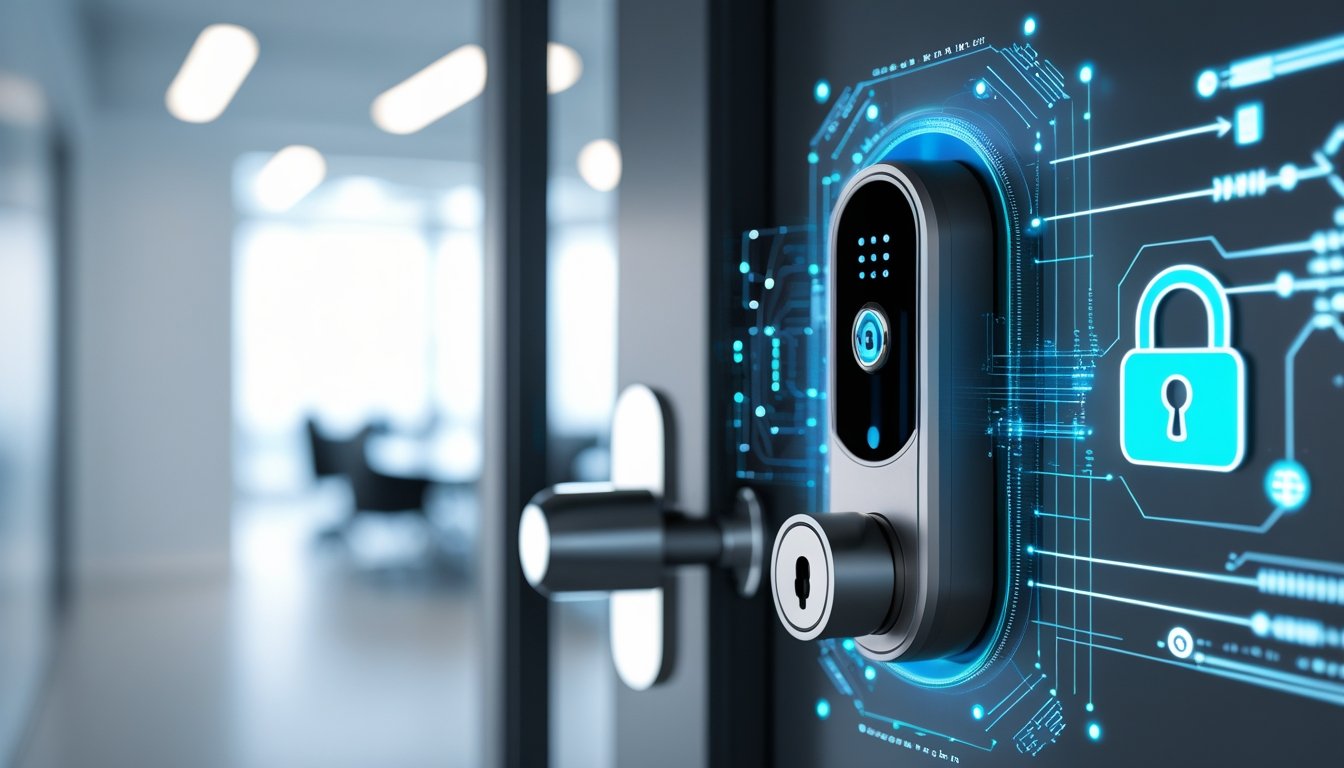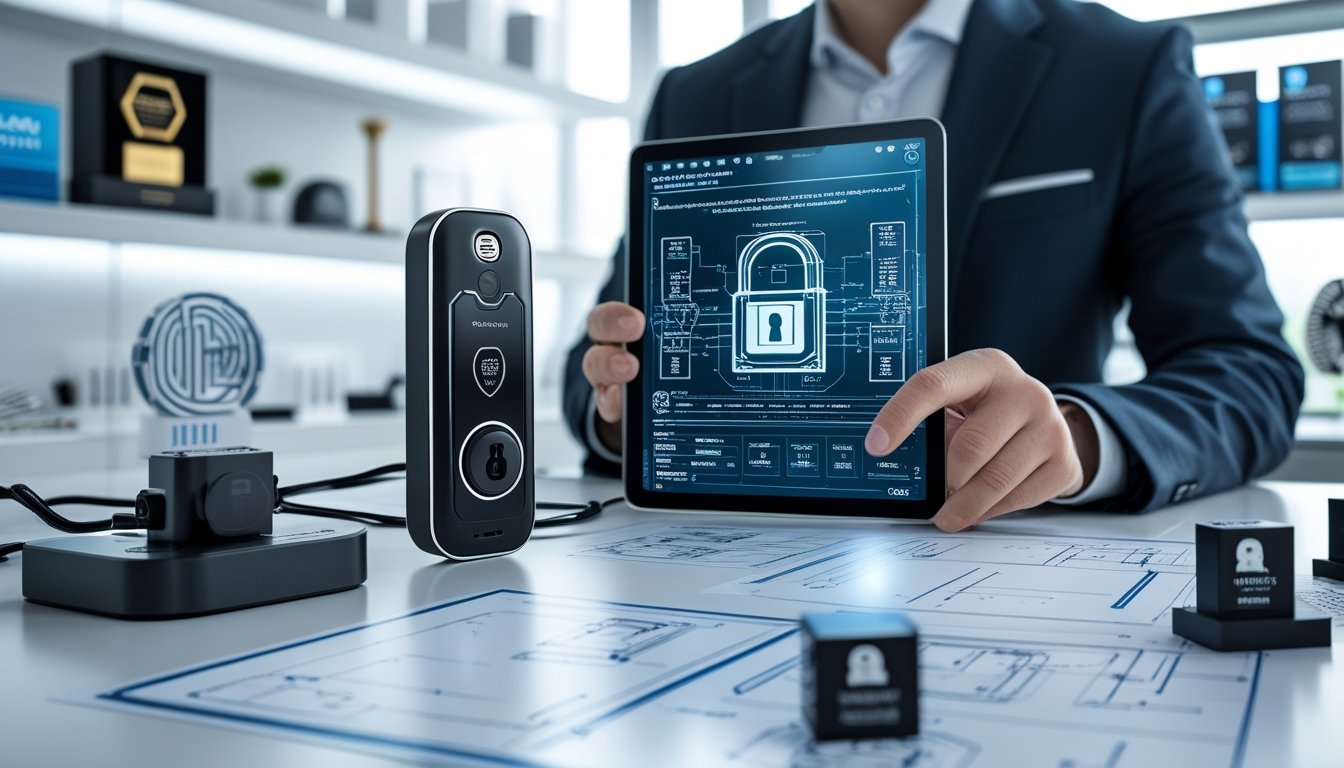Late updated: 21 Oct 2025 09:10
Written by: Elena Prescott
Guide To Advanced Lock Technology Innovations: Exploring Cutting-Edge Security Developments
In the rapidly evolving landscape of security technology, advanced lock systems have taken centre stage. Today, these sophisticated mechanisms do much more than just secure doors. Smart locks equipped with biometric systems and smartphone integrations offer unparalleled convenience and security for homes and businesses alike. These innovations, driven by the demand for enhanced protection and ease of use, are shaping the future of how we secure our spaces.

We are seeing a convergence of technology and accessibility in ways never imagined before. From artificial intelligence augmenting security features to advanced digital solutions integrating seamlessly into our daily lives, the options available are vast and impressive. As we explore these innovations, it's clear that the landscape of lock technology has evolved tremendously, propelling us into an era where security doesn't come at the expense of convenience.
Key Takeaways
- Advanced locks now include features like biometric access and AI.
- Integration of smart technology is changing the security industry.
- Future trends focus on enhancing both convenience and safety.
Core Innovations in Advanced Lock Technology
Advanced lock technology is transforming how we secure access to our homes and businesses. With innovations ranging from smart locks and biometric security to voice-activated controls and enhanced connectivity, these new systems offer both convenience and heightened security. Let's explore the significant advancements that are redefining access management.
Smart Lock Systems and Keyless Entry
Smart lock systems have revolutionised how we think about securing our spaces. Embracing technology, these locks provide keyless entry, often relying on Wi-Fi or Bluetooth for seamless integration with smartphones. This allows us to lock or unlock doors remotely through mobile apps or smart home assistants like Amazon Alexa and Google Assistant.
Convenience is a significant benefit, eliminating the need for traditional keys. We also gain the added advantage of monitoring entry logs and receiving alerts about who accesses the premises. Keyless entry systems are designed to integrate smoothly into existing security frameworks, making them a popular choice for both residential and commercial applications.
Biometric Security: Facial Recognition and Fingerprint Locks
Biometric security is at the forefront of modern lock innovations, providing sophisticated options like facial recognition and fingerprint locks. Facial recognition locks utilise cameras and algorithms to grant access only to authorised individuals.
Fingerprint locks offer a similar level of security by using unique biometric data. These systems enhance security by ensuring that only specific, pre-approved users can access a building or room. The precision of biometric systems significantly reduces the risk of unauthorised access. As technology evolves, these methods become more refined and accurate, making homes and businesses more secure.
Voice-Activated and Mobile App Access
Voice-activated systems have gained popularity, allowing users to control locks through simple voice commands. By integrating with smart home ecosystems like Google Assistant or Amazon Alexa, these systems offer hands-free convenience and accessibility.
Mobile app access complements this capability by enabling remote control of locks from virtually anywhere. Whether we wish to allow entry to a guest or check the status of our locks, mobile apps provide real-time solutions. This integration of voice and app-based control enhances the flexibility and intelligence of modern locks.
Connectivity: Wi-Fi, Bluetooth, and Remote Control
Connectivity is a core component of advanced lock technologies. Utilising Wi-Fi and Bluetooth, these locks ensure seamless communication with other smart home devices.
Remote control functionality is a critical feature, permitting users to manage locks from distant locations. This ensures peace of mind, knowing we can monitor and control access even when not present. The connectivity also facilitates updates and access management changes without physical interaction, adding an invaluable layer of convenience and efficiency.
Integration, Security, and Future Trends

In advanced lock technology, integration with smart homes, enhanced security measures, and diverse commercial applications are key components. These elements ensure that systems are both effective and adaptable to evolving needs.
Smart Home Automation and Access Control
The integration of smart locks with home automation offers seamless, user-friendly control over access to our spaces. Smart locks enable us to remotely manage entries using smartphones or voice commands. This connectivity enhances daily convenience and increases our home security measures.
Devices can communicate with smart home hubs, integrating with existing systems like security cameras or lighting. This interoperability strengthens access control, allowing real-time alerts and offering programmable permissions for different users. Enhanced connectivity streamlines operations and protects against unauthorised access.
Advanced Security Systems and Cybersecurity
Incorporating advanced security systems with cutting-edge features such as biometric authentication and encryption ensures robust protection. We see increased adoption of AI-powered algorithms capable of learning routines, identifying anomalies, and providing real-time alerts when security threats are detected.
Cybersecurity is critical, especially as more devices connect online. Implementing effective encryption and authentication protocols helps prevent breaches. As smart locks become targets for cyber threats, maintaining their security is paramount. Regular software updates and security patches are essential for safeguarding sensitive information.
Commercial Applications and Installation
Commercial environments benefit substantially from advanced lock technology. Security systems with networked capabilities are essential for protecting assets and managing employee access. These systems can monitor multiple entry points, integrating with broader security solutions such as CCTV and automated alert systems.
Smart lock installations in commercial settings allow for flexibility and scalability. Customisable access levels enhance security in diverse workplaces, from small businesses to large enterprises. Installation processes are streamlined, accommodating specific layout needs without extensive changes to infrastructure. This improves both security and operational efficiency.
Frequently Asked Questions

In recent years, lock technology has seen significant innovations. These advancements include biometric systems, smart home integration, AI advancements, and more, which make locks not only secure but also user-friendly.
What are the most recent advancements in biometric lock systems?
Biometric lock systems now employ more sophisticated algorithms to ensure security. They use unique physical traits like fingerprints and facial recognition to authorise access. These improvements enhance security by making it difficult for unauthorised individuals to gain entry.
How has smart home integration impacted lock technology security?
Smart home integration has transformed lock technology by enabling remote access and control via smartphones. This innovation allows users to monitor and manage their locks from anywhere, adding convenience and enhanced security features like instant alerts.
In what ways has AI contributed to the development of advanced lock systems?
AI has bolstered the development of lock systems by enabling them to learn and adapt to user behaviours. This technology can predict security threats, automate access permissions, and continuously improve lock functionality over time, making them both smart and secure.
What are the emerging trends in tamper detection for high-security locks?
Advanced tamper detection technologies are being integrated into high-security locks. These include sensors that detect forced entry attempts and instantly alert users. Additionally, some systems can trigger lock-down protocols, effectively thwarting break-in attempts and notifying the authorities.
How do electronic locks comply with the latest safety regulations?
Electronic locks are designed to meet stringent safety regulations. They incorporate encrypted communication protocols and robust authentication processes. Compliance ensures these locks offer reliable security while adhering to legal standards, which is essential in protecting personal and property safety.
What breakthroughs in material science have improved lock durability and resistance?
New materials, including advanced alloys and composites, have enhanced lock durability and resistance. These materials offer superior resistance against physical attacks and environmental factors like corrosion, ensuring locks remain functional and secure for longer periods. Such advancements continue to improve lock performance in demanding settings.
